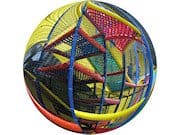For qualified businesses, the Domestic Production Activities Deduction (DPAD) is one of the most lucrative tax breaks manufacturers can claim today — having doubled in value in 2007. It increased even more in 2010.
Although the deduction has been available since 2005, many companies are still not aware of its significant benefits. Designed to stimulate domestic production and create jobs in the United States, the DPAD is extremely complex. To maximize the tax savings, your business needs to plan ahead.

The Domestic Production Activities Deduction was passed as part of the American Job Creation Act of 2004.* It was intended to help offset the phased-out repeal of a tax break for U.S. importers called the extraterritorial income exclusion. * The rules for this tax break are found in Section 199 of the Internal Revenue Code so it is sometimes called the Section 199 Deduction. |
To assist you in navigating the maze, here are some answers to frequently asked questions about the DPAD. Keep in mind that if your business did not claim the deduction in prior years, there may be an opportunity to file an amended return and claim a refund.
Q. Who is eligible for the Domestic Production Activities Deduction under Section 199?
A. The deduction provides tax savings to a much larger group of businesses than you might think.
Starting with the 2005 tax year, the DPAD became available to manufacturers who derive gross receipts from the lease, rental, license, sale, exchange or other disposition of qualified production property.
Obviously, the deduction is available to traditional manufacturers of clothing, goods and food, as well as farmers. However, it can also be claimed by businesses engaged in a wide variety of other domestic production activities including:
-
Certain real property construction
-
Music recordings and film production
-
Electricity, natural gas and water
-
Engineering and architecture services for the construction of real property, and
-
Software development
The deduction can be claimed by all types of business entities, including C corporations, S corporations, limited liability companies, partnerships and sole proprietorships. (Trusts, estates and their beneficiaries may also be able to benefit.)
Q. How is the deduction calculated?
A. Currently, the DPAD equals 9 percent of the lesser of:
-
Taxable income derived from qualified production activities or
-
Taxable income for the year (determined before the DPAD).
(For the 2005 and 2006 tax years, the percentage was 3 percent. For 2007 through 2009, it was 6 percent.)
However, the deduction cannot exceed 50 percent of W-2 wages allocatable to domestic production gross receipts. (Therefore, if your business pays minimal wages, your deduction will be very small.)
Q. What do you mean by “income derived from qualified production activities”?
A. Detailed calculations are required to arrive at your company’s Qualified Production Activities Income. Basically, you take your domestic production gross receipts and subtract:
-
The cost of goods sold allocated to such gross receipts
-
Direct expenses allocated to such receipts
-
A ratable portion of other indirect expenses (such as certain overhead items)
Depending on the size of your company, there are special rules that could influence how the cost of goods sold and other expenses are allocated in calculating Qualified Production Activities Income. You may want to modify your accounting system to capture the information necessary to calculate and maximize your deduction.
Q. Can my business claim the deduction for products that are only partially manufactured in the United States?
A. Yes. To qualify, property must be manufactured, produced, grown or extracted in whole — or in significant part — in the United States. In general, you can meet the “significant part” test if:
-
Based on all of the facts and circumstances, the manufacturing, production, growth or extraction activity performed in the U.S. is substantial in nature, or
-
The labor and overhead costs incurred in the U.S. for the manufacture, production, growth, and extraction of the property are at least 20 percent of the total cost of goods sold or the total cost of the property produced
Q. How can I find out if my business qualifies for the deduction?
A. This article explains the general guidelines that apply to the Domestic Production Activities Deduction. However, the details are complicated. In addition, special exceptions and other rules may apply to your particular business. Consult with your tax adviser to plan ahead to maximize the deduction.
Click Here to learn more about our manufacturing and distribution team.

